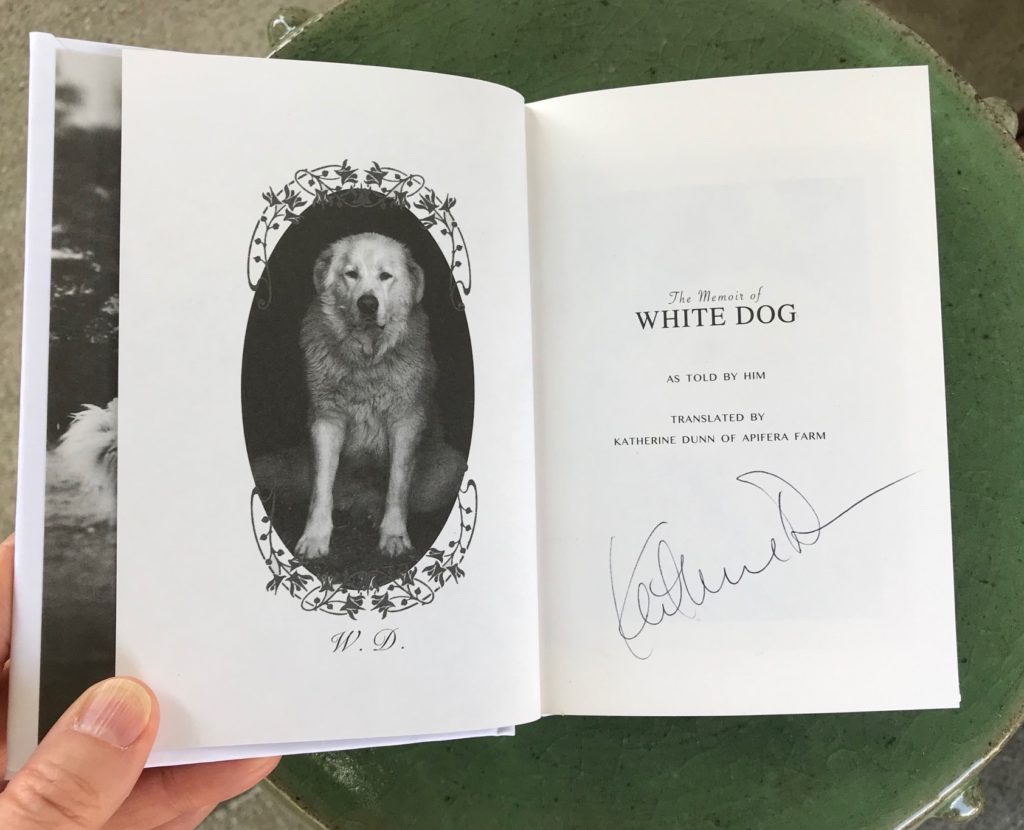
This blog posts on Mondays. Second Mondays of the month I devote to my writing workshop students and anyone else interested in creative writing. Welcome!
> For the archive of workshop posts click here.
A BOOK RESCUED
I wish I’d had the foresight to take a photo of what this book looked like before its repair: the spine torn off and hanging to one side by threads. It’s the ninth edition of the “Fannie Farmer” Boston Cooking-School Cook Book published in 1951, not a valuable book in the rare book market, and this specimen less so for its decades-old gravy and butter stains. But it is a tremendously valuable book to me because it was my mother’s. I took it to my local bookbinder and, for about the price of a pair of Keds, voilà:


It strikes me as curious that in all the many writers workshops and conferences I’ve attended over the years I cannot recall anyone ever even mentioning the craft of book binding. But what skill it takes to do it well! And what a difference it makes! With its repaired binding, this dear workhorse of a book has been given the dignity it well deserves.
What has this to do with a writing workshop? Two things.
First, as a writer I’ve come to realize that the quality of the book’s design, paper, and binding is immensely important, for its gives the book its presentation– like a frame for a picture or the dress for a bride– and it also gives it the sturdiness it requires to survive over time.
Second, I’ve come to believe that as a writer it matters why and how I treat my books because respect for them is respect my own endeavor. Generally speaking, I have learned to try to keep them out of the sun, I avoid eating or drinking while reading them, and I take care not to fade, fold, bump or tear any dust jackets. However, that doesn’t mean I’m ever and always fussy about my books. I’ll toss out battered old mass market paperbacks, and I often donate books. And some books I go ahead and give myself liberty to attack! I mean in a good way!
A BOOK ATTACKED (IN A GOOD WAY!)
An age ago I posted about using scissors to cut up Tolstoy’s War and Peace (which, as I explain in that post, enabled me to read it, for I couldn’t otherwise get that brick into my suitcase).
A more recent example: Doug Hill’s superb Not So Fast: Thinking Twice About Technology. When I ordered Not So Fast I guessed it would eventually become an important collector’s item, so I shelled out the clams for the University of Georgia Press first edition hardcover from bookdespository.com. Alas, when it arrived I found that the dust jacket had been badly treated (um, actually it looked like the forklift left greasy tire tracks on it). Translation: as a physical object my copy has little to zero value. Because I was so anxious to read it for my own work-in-progress however, rather than ask bookdepository.com for a replacement, I took this as a welcome opportunity to go ahead and mark it up with my notes. So: maltreated my copy may be, both in the warehouse and by my scribbles, it’s a book that is tremendously valuable to me as a working writer. (And I warmly recommend it to you, dear reader, by the way.)


How do you treat your books? And why? These are questions I didn’t think to ask myself for many years. These may not be trick questions, but they are tricky questions, for they necessitate distinguishing the book as a thoughtform from the book as a physical object, and they also require self-awareness and clarity in one’s intentions, as both a reader and a writer.
WHITE DOG
The other day my copy of visual artist and writer Katherine Dunn’s latest book, White Dog, arrived. So obviously made with love and joy, White Dog is one of the most exquisite books that I have ever seen. Dear writerly readers, it is self-published. And I do not believe that any commercial publisher would have, nor could have, done justice to her vision.

UPDATE: See the Q & A with Katherine Dunn for this blog here.
MORE TO COME ON SELF-PUBLISHING
Those of you who have been following this blog well know that since early 2019 I’ve been migrating selected posts from the old Google platform. I have a batch of posts on self-publishing that I’ll be getting to in the coming weeks.
To be clear, I’m not a champion of self-publishing per se; I sincerely respect and value what a good publisher’s team (editor, copyeditor, book designer, sales reps, publicist, back office) can do. Most of my books have been published by traditional publishers or university presses, and indeed, I aim to place my recently completed collection of essays and my book in-progress with a publisher (wish me luck). But without making much effort to find a publisher (for good reason, which I go into in the relevant blog post) I self-published Metaphysical Odyssey into the Mexican Revolution. In addition I have self-published several Kindles, including this longform essay about the Mexican literary landscape. I remain open to the idea of self-publishing again in the future. In the post-covid economy, where we can expect smaller catalogs and fewer publishers, that may turn out to be the increasingly more realistic route. We shall see. More anon.
P.S. You can find the archive of workshop posts migrated-to-date here. Again, I offer a post for my workshop students and anyone else interested in creative writing on the second Monday of every month.

Q & A with Joanna Hershon on Her New Novel St. Ivo
Find out more about
C.M. Mayo’s books, articles, podcasts, and more.

